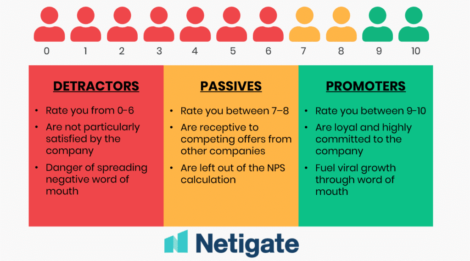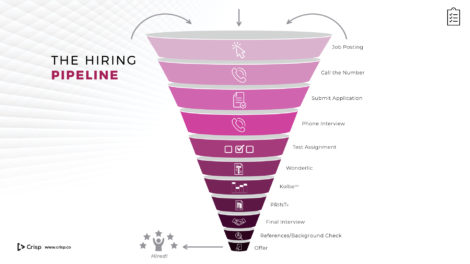Operations are the lifeblood of your law firm, and if you haven’t taken the time to nurture them to their fullest potential, then your law firm is already behind.
Let’s start with the basics: What are operations?
The operations of your law firm encompasses managing the business’s inner workings so it runs as efficiently as possible. There are many aspects that could fall under this umbrella, but the main idea is constantly improving your processes to keep your firm running as smoothly as possible — and it’s vital that you don’t overlook this part of the job.
While many leaders tend to focus on how their firm looks to potential clients on the outside, the truth is that the biggest factor impacting this priority is actually how things are operating on the inside — where potential clients can’t necessarily see.
In this article, we’re going to help ensure your law firm is working as effectively as possible, starting with the five pillars of strong law firm operations:
- Strategic Feedback Loops
- Accurate Business Forecasts
- Clearly Defined KPIs
- Structured Hiring Process
- Effective Onboarding Process
1. Strategic Feedback Loops
Feedback is essential to any organization hoping to grow. In fact, it’s one of the best ways to make a difference in your firm’s operations, both internally and externally. Asking for feedback helps you as the leader of your organization get a clear picture of what your clients experience when they work with you, as well as keep a pulse on how your team members are performing.
So why does it matter? Here are some tangible benefits of establishing feedback loops in your law firm:
- Measure the client experience to see how your clients truly feel about working with you, and see if there’s any areas you need to improve.
- Gather more granular information that you might not get just from speaking with your clients to make sure you’re providing the legal services they want, or if there’s something they’re missing from working with you.
- Discover how your services compare to your competitors and prevent client churn.
Cy Wakeman, best-selling author, workplace drama researcher, and leadership consultant, articulates the importance of feedback well:
“Every bit of criticism is a gift, helping you see past your ego and make the changes you need to become more competent, more effective and more valuable.”
One way to get the most out of feedback is to keep tabs on your law firm’s NPS. Short for Net Promoter Score, NPS measures clients experience and predicts business growth. Here’s how it works:
Calculate your NPS using the answer to a key question, using a 0-10 scale: How likely is it that you would recommend this law firm to a friend or colleague?
Respondents are grouped as follows:
- Promoters (score 9-10) are loyal enthusiasts who will keep coming back and refer others to the law firm, fueling growth.
- Passives (score 7-8) are satisfied but unenthusiastic clients who are vulnerable to competitive offerings.
- Detractors (score 0-6) are unhappy clients who can damage your brand and impede growth through negative word-of-mouth.
Subtracting the percentage of Detractors from the percentage of Promoters yields the Net Promoter Score, which can range from a low of -100 (if every client is a Detractor) to a high of 100 (if every client is a Promoter).
When you combine the power of NPS with other metrics from various points along the client journey, you’ll eventually have a comprehensive view of their experience. This is vital to your law firm because it gives you the information and tools you need to grow your organization to its full potential.
If you’re wondering how to go about getting and using all of this information to your advantage, check out a few of these platforms that will help you grow and scale your business as well as get the most accurate information from your clients:
- AskNicely: AskNicely is a platform for service businesses to empower their frontline teams, make every customer experience awesome, and accelerate growth.
- ChurnZero: ChurnZero is a platform that gives your client success team the proactive edge they need to stay ahead.
- Survicate: Survicate is a tool that helps you gather customer feedback on all digital channels. You can send surveys by email, link, chat, or in-product. You can run targeted surveys on websites and within web or mobile apps. It integrates with a large variety of CRM, Analytics, and Customer Support tools, among others.
- SurveyMonkey: SurveyMonkey is an online survey software that has over 100 available integrations with various apps and plug-ins, such as MailChimp, Slack, Google Drive, Microsoft Teams, and Hubspot.
- Typeform: Typeform is a tool used to build interactive forms, surveys, and quizzes.
These are just a few of the options available on the market, and it’s best to decide which one works for your firm’s unique needs.
The importance of feedback cannot be overstated, and if you haven’t started implementing it into your law firm, there’s still time to get ahead and make your transformation story happen.
2. Accurate Business Forecasts
Metrics.
What exactly does this word mean, and how can understanding your law firm’s metrics help you predict cash flow and strategize business goals?
Metrics are measures of quantitative assessment commonly used for assessing, comparing, and tracking performance or production. Whether you’re measuring your number of cases, number of clients, number of surveys answered, or the number of attendees to your webinar, all of those metrics can inform the financial forecasts you make for your business.
Measuring business metrics can give a law firm’s leadership a clear picture of where their cases come from, how they can expect cash flow to come in and out of the business, and the gaps between their vision and their strategy of getting there. The goal of measuring these things is to inform, plan, and set goals for the future.
Having a blind eye to any type of metric could mean a major mistake made that could bring serious risk. Some things you should look at in your metrics are:
- How many new cases the firm signs in a month
- Average case values to help predict incoming revenue
- Time to close cases and billing timelines to establish cash flow
- Forecasts for what your future financial health looks like
- How many people you’ve hired over the last month, six months, year, etc. to establish business growth metrics
- And so much more
Understanding these factors makes it easier for you to project into the future, adjust your operations as needed, understand what you need to improve, and overall run a more efficient and effective law firm.
3. Clearly Defined KPIs
Key performance indicators (KPIs) are strategic data used to measure success within an organization. According to KPI.org, this critical data indicates progress toward an intended result. In essence, a KPI is a measurement of progress toward a particular goal.
Let’s take client cases closed, for example.
If your firm needs to bring in $X of revenue in a year, and, based on previous case metrics as discussed above, then you know meeting the revenue goal it will require you to close Y number of cases in that year. So, you might measure the number of cases needed to close on a monthly basis to meet the overall annual goal. And thus, a KPI is born.
There is no position that exists in your firm that does not have the potential to create KPIs for — but it’s up to you to determine what fits best, what will be the most effective, and what your firm’s unique needs are.
Be sure to create an accurate system for tracking these metrics and put them on display for your entire team to understand where everyone stands on goals at all times.
Here are a few examples of KPIs that can be measured in and around your firm:
Operations
- Budget adherence
- Project completion by deadline
- Data accuracy
- Process development and implementation
- Number of intakes per month
- Number of positive Google reviews posted per month
- Average response time
- Number of new leads generated per month
- Number of content pieces published per month
- Social media engagement rate per platform
Attorneys
- Average case value
- Net new revenue
- Client referrals generated
Anything that can be measured can be turned into a KPI for your law firm. The more you measure, the clearer the picture you have of your law firm’s progress toward its long-term vision and goals.
4. Structured Hiring Process
If you want to build a successful law firm, you can’t do it alone. The team you build is the company you build. You’ve got to find the best possible candidates each time — and get them to want to work with you. To make it happen, develop an in-depth hiring process to create a predictable, structured pipeline of new team members.
Your hiring process should be unique, effective, and the same for every single person who applies to a job at your law firm. The further you stray from doing things differently each time, the more convoluted and confusing your process will be, thus making it increasingly more difficult to make the right hiring decisions every time.
Take a look at what potential team members can expect when they apply to a job at Crisp:
Here’s a breakdown from beginning to end:
Step 1: The Job Description
Step 2: Call the Number
Step 3: Submit Application
Step 4: Phone Interview
Step 5: Test Assignment (with a Firm Deadline)
Step 6: Assessments
Step 7: Final Interview
Step 8: References/Background Check
Step 9: Offer Letter
Clearly, strong hiring cannot be done on gut feeling. Here are a few mindset shifts to make around hiring to transform the way you attract top talent:
- Hire the best people, not the best available people.
- Think of recruiting as marketing and sales: build a pipeline, create a funnel, and weed out bad-fit candidates every step of the way.
- Stick with the same hiring method for each person that applies.
- Selling the benefits of working with your firm over competitors. Are you marketing your company’s culture? Are you selling the awards, recognition, and accolades you’ve received?
- View team members as investments to be maximized, not as costs to be minimized.

We live in the age of the Great Resignation. Professionals are not settling for less anymore, and neither should your firm. While building your hiring process, keep in mind that it’s a two-way street. Your law firm must be a place where people want to work, and you must communicate that to candidates throughout the entire hiring process.
5. Effective Onboarding Process
As of July 2021, 4.3 million Americans quit their jobs and 10.4 million jobs stood open. The American economy experienced 30% attrition across various sectors, and 57% of employees polled said they’d consider taking a new job in the coming year.
Hiring A-players is only half the battle. Effectively onboarding new hires makes a huge impact on whether they will stick around and be effective members of the organization.
Great team member onboarding can improve retention by 82% and yet 88% of organizations don’t onboard well — meaning only 12% of team members believe their organizations do a great job onboarding.
What is the cost of not creating a superior onboarding experience? Nearly 33% of new hires look for a new job within their first six months on the job. Among Millennials, that percentage is even higher — and it happens earlier.
Great onboarding is about reinforcing the right decision before they have even started and as they get started. When they show up on their first day, is their calendar empty? If you don’t know what they are doing, how do you expect them to know? They also now feel deprioritized. Without a full calendar and clear exceptions, they will never meet your expectations. You will be frustrated, and they will be unfulfilled.
Consider standardizing what happens for each new hire in the days/weeks leading up to their start date, their first day, first 30 days, first 60 days, and first 90 days. What training will they need to complete? What critical results will they be measured on? What projects will they be expected to handle?
Be intentional. Connect new hires with the right people, resources, and training — right from the start. They’ll connect with your organization immediately and be primed to stay, rather than go.
Final Thoughts
If any of this feels overwhelming to you, we’re here to assure you that you don’t have to streamline your law firm’s operations alone. We’ve got the answers to your burning questions, your biggest problems, and your most dangerous impediments.
Enter: Crisp Coach.
Crisp Coach is a closed-door community of the highest-performing law firms, and that means yours.
Ask yourself these very important questions:
- Do you have everything you need to overcome your law firm’s biggest barriers to growth?
- Can you compete in an increasingly competitive legal landscape?
- Are you operating like a CEO, running your law firm like the business it is?
- Will your firm’s legacy outlast you?
Let us help you answer those questions with a resounding YES.
Don’t wait another minute. Prepare yourself for the ever-changing legal landscape and get ready for what’s to come in 2024. As we’ve seen over the past few years, the only thing that’s certain is uncertainty, and we can help you overcome anything that stands in your way of success.
Are you ready for this?













